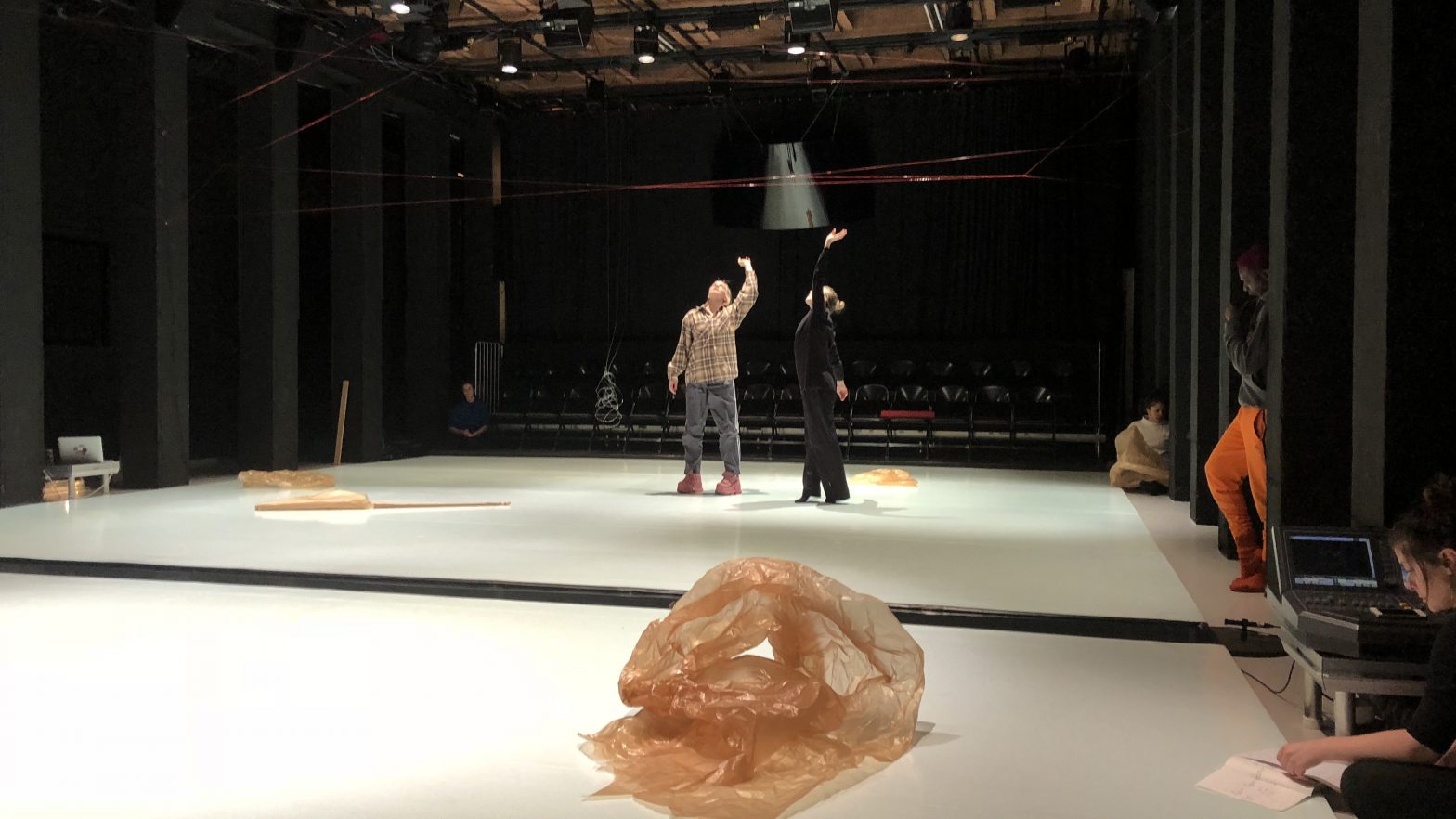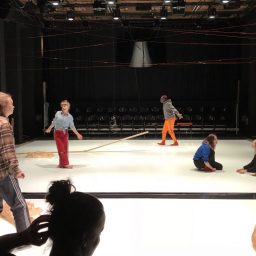Just a few days before their show “Dry Storm” opened at Kallio Stage earlier this month, choreographer Sara Gurevitsch sits, laughing, as the six performers leap around the stark-white floor space, as much in an attempt to loosen up before rehearsal as well as crack Gurevitsch up.
The group is relaxed — and focused. They’ve been working together on this piece on and off since September, and spent all of January preparing at their Kallio Stage performance space. The performers, both students and graduates from the Theatre Academy at Uniarts Helsinki, sit comfortably on the floor and observe while different pairs practice short dance interactions. Gurevitsch provides direction from the edge of the brightly-lit performance space in the darkened audience seats.
“I feel like I’m offering some starting points,” says Gurevitsch of her thematic direction for the piece, “things that we can, sort of, grab and grow from.” Quite deliberately, Gurevitsch involved not only dancers but also actors in the performance. She feels the different training they have changes their individual approaches, and thus, more interesting interactions between performers occur.
Gurevitsch provides the six performers with a certain amount of freedom during the piece, which means each individual show during its run in early February had its own unique interactions between performers. Still, she says she’s conditioned the performers to move and think in a certain way for the piece, and they choreographed several specific interactions. Gurevitsch describes her approach as “enabling the complexity of a moving body.”
Around the performers, imposing black columns flank Kallio Stage’s performance space, giving it the air of an amphitheater. The dancers writhe on the floor, practicing their movements and their interaction with the few carefully chosen materials in the space. The most striking is a piece of plain brown plastic paper, which makes a delightfully loud crackling sound as the performers interact with it. Performer Tuuli Heinonen, an acting student, calls the material her “co-worker,” because of the dry quality it brings to the performance.
The contrasting columns also serve as comfortable nooks for sound designer Tom Lönnqvist and lighting designer Sofia Palillo, who sit on opposite sides of the performance space, constantly testing and adjusting lighting schemes or compositions, preparing for the fast-approaching opening of the show. Palillo’s control over the lighting is magical. During the rehearsal she switches between warm atmospheric lights, to sterile, revealing fluorescents, to moodier dynamic lighting which feels like sunlight in a sandstorm.
Lönnqvist, meanwhile, who’s contributions to “Dry Storm” are part of his thesis work, continues tweaking the third and final piece for the performance. It triggers a web of red wires stretched over the performance space to bounce, providing a tight, measured quality to the piece. Its mechanical movement contrasts with the organic interaction of bodies happening below.
In short, the whole performance resonated with a strange kind of harmony — the lighting, the sounds, and the organic and inorganic movement creating a starkly focused atmosphere for the audience, inviting them to take a closer look at an interpretation of the human condition.


